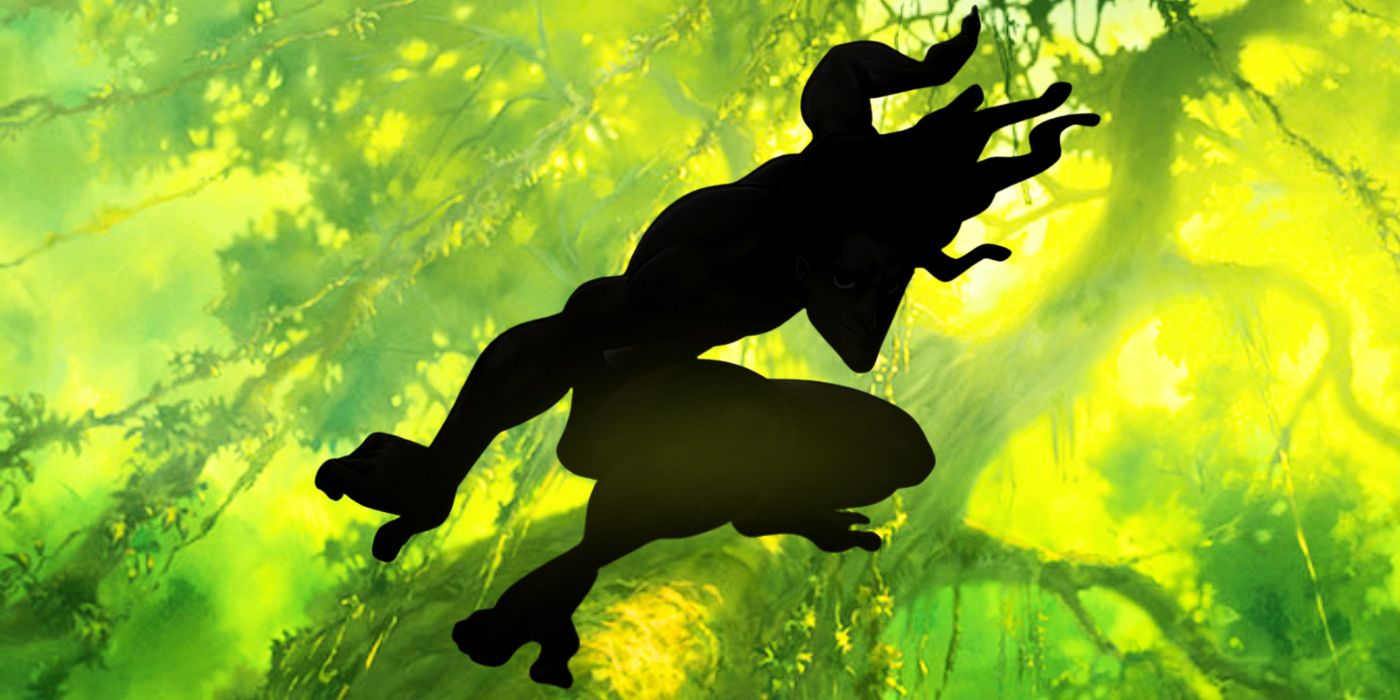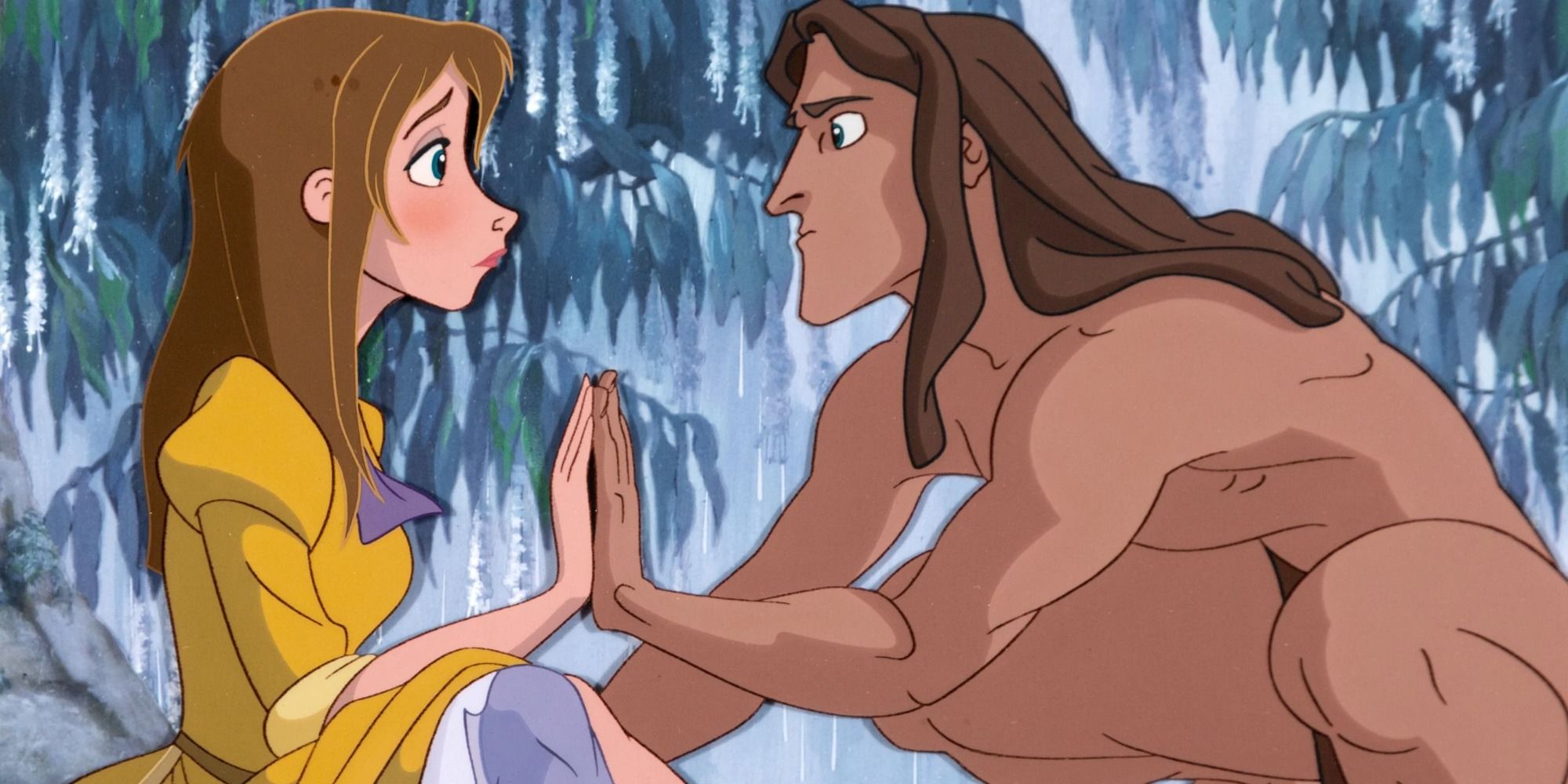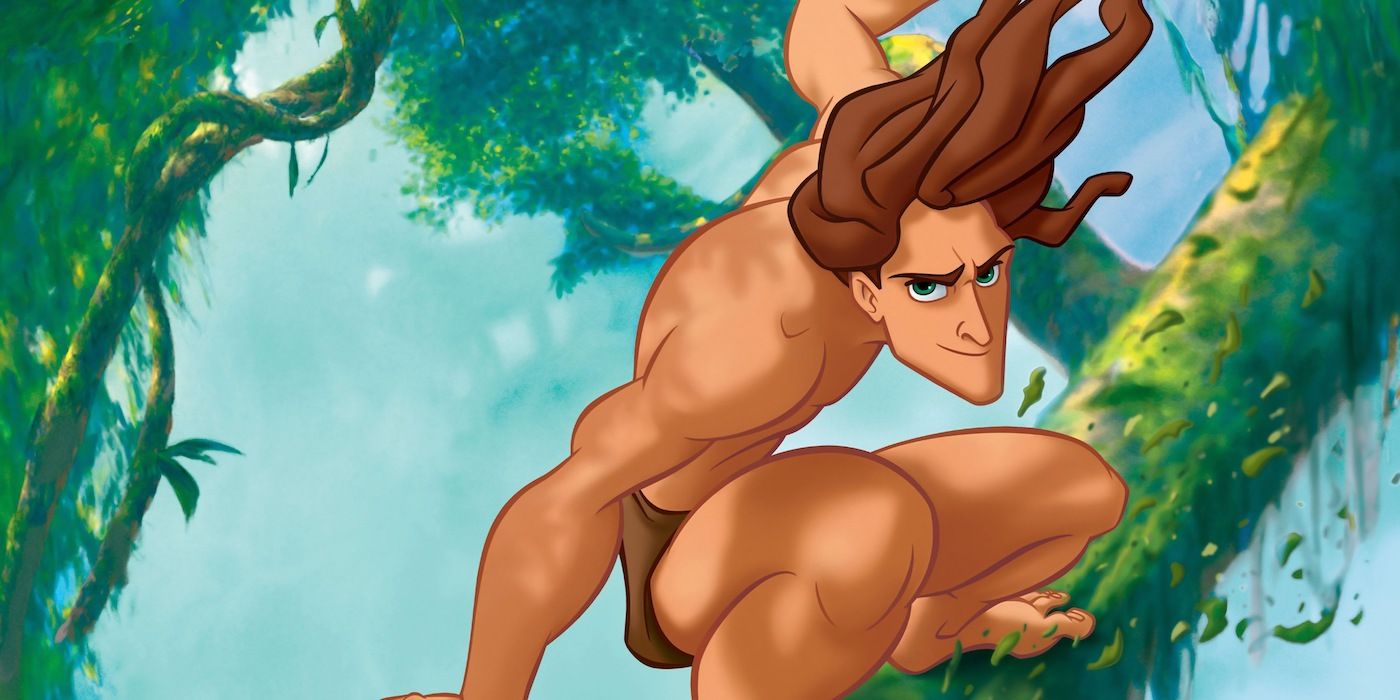The Big Picture
- Disney's 1999 film adaptation of Tarzan stands as the best version of the character, thanks to its unique blend of narration and visuals.
- Unlike previous adaptations, the film puts Tarzan himself at the center of the story, exploring his relationships with both the ape and human worlds.
- The animation brings Tarzan to life in a way that no live-action adaptation ever could, with his physicality and behaviors seamlessly blending nature and nurture.
Released at the tail end of the decade that would come to be known as the studio's animated renaissance, Walt Disney Animation's Tarzan is fondly remembered today for its stellar fusion of hand-drawn/computer animation and iconic Academy Award-winning music by Phil Collins. Directed by Kevin Lima (A Goofy Movie) and Chris Buck (Frozen), the 1999 film streamlined the adventures and mythos of Edgar Rice Burroughs' jungle hero into a story of how love can bridge across “two worlds, one family.” Starring Tony Goldwyn as the titular hero with a supporting cast of nineties stars like Rosie O’Donnell, Minnie Driver, and Wayne Knight, the film tells the origins of Tarzan’s early life with the apes and his first encounter with his human roots. What makes Disney’s version the best adaptation of Tarzan ultimately comes down to how they adapt the character of Tarzan himself to the screen, both narratively and visually, compared to previous incarnations.
In the traditional Disney fashion, the film’s success had also spun off into a veritable franchise life of its own in a parade of home video sequels, a Saturday-morning television series, a short-lived Broadway musical, theme park attractions, and videos games appearances. Under the Disney label, Tarzan found a new life going into the 21st century as a prestigious “Disney classic” by honoring the original literary source with a contemporary twist, allowing the film to become many modern audiences’ introduction and definitive interpretation of Burroughs’ "Tarzan of the Apes" series. However, despite its popularity and resonance as a repackaged animated phenomenon, the film succeeds on its own merits in adapting Burroughs’ work to present the screen world's most enthralling vision of the ape-man.
Why Does Disney's 'Tarzan' Work So Well?
In most of his previous on-screen history throughout the 20th century, most famously by Johnny Weissmuller in the '30s and '40s, Tarzan was more so seen for the naturalistically masculine spectacle he provided as he performed daring deeds and engaged in romantic adventures with various Hollywood starlets playing the youthfully virtuous Jane. The appeal of the character was his he-man physique and animalistic behavior that culturally “othered” him when juxtaposed with modern civilized humanity. Tarzan’s animalistic behavior placed him in the archetype of the “noble savage,” where the marvel of his screen presence was in how alien and superhuman he was compared to modern white society as a product of the uncolonized world of the jungle. For most of his history in film, Tarzan was seen less as his own character and more as a vehicle for romanticizing the Eurocentric spectacle of a half-man, half-animal creator with the sex appeal of peak masculinity and the otherworldly naïveté of an animal or native “savage.”
The '99 film is unmistakably Tarzan's story with him as the central character and the relationships he forms between his worlds of nature and nurture that creates the film’s central conflict. The story is built on the turmoil he feels between his adoptive ape family of the jungle world and the new strangers he comes to know as his fellow humans. The film follows Tarzan from when he was a little kid learning to survive in his jungle environment and prove his worth to his ape family, providing childhood insight no other Tarzan adaptation has into how his displacement as a human among apes manifests into inert isolation from the other animals. It is not until he meets other humans for the first time in his young adulthood that his isolation from the animal world amplifies into a heartbreaking dilemma as he learns more about the human world and his eagerness to adopt humanity as his own at the cost of leaving behind the only family he’s ever known. Tarzan has always been othered by civilized humanity in previous adaptations, but the animated film gives perspective into how Tarzan also feels out of place among the apes as his own family, not just civilized humanity.
Animating Tarzan Brings Him to Life On-Screen in a New Way
By virtue of being the first-ever animated film adaptation of Burroughs’ ape-man, Disney uses the animation medium to bring Tarzan to life, according to the film's marketing, "as only ever imagined". Unlike the primarily eye-candied he-men that portrayed previous live-action versions of the character, Disney’s Tarzan is animated with a heightened performative physicality believably rooted in him spending a lifetime adapting to the harshness of the jungle environment and adopting traits from the other animals to survive. He is seen adopting the physicality and even language of various animal species, from lizards and leopards to baboons. Supervised by legendary Disney animator Glen Keane, Tarzan’s anatomically accurate musculature also enables his on-screen feats of athleticism to reach levels of animalistic fluidity and subtlety that no live-action performer of the role has ever done or will ever be able to do. Tarzan’s ape-like behaviors and locomotion, coupled with an identifiably human facial performance, render a version of the character that blends the nature and nurture of the character seamlessly into a single animated performance.
The highlight of the film’s animation is how Tarzan is seen creatively traversing through the jungle canopy in ways only possible in animation. Inspired by the movements of professional surfers and skateboarders of the '90s like Tony Hawk, Tarzan is seen not only swinging from vines like he famously does but also grinding and shredding his way through the dense jungle canopy at wild speeds as if he were on a board and ramp. The deep canvas technology, which allowed the artists to render computer-generated spaces in painterly detail in harmony with the hand-drawn characters, also gave Tarzan’s exploits a sense of immersion and depth through space, unlike anything the character had ever seen before in adaptation.
Disney’s Tarzan closed the book on a renaissance era of Disney Animation and spearheaded a franchise boom of ancillary material like most Disney blockbusters at the time, but apart from its market success as a Disney classic, the film stands head and shoulders above any adaptation of the Burroughs legend that has yet to be rivaled since. The attention given to who Tarzan was as a character and the liberties the premise gave the animated medium helped swing the Disney film into the ape-man's most endearing incarnation that will forever be in the hearts of fans for years to come.



